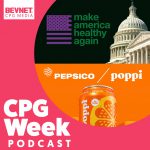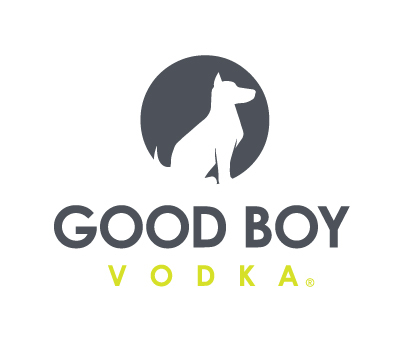Whipstitch Capital: Better-for-You Growth is “Beyond Long-Term”

The growth of better-for-you products has been one of the top stories of the food and beverage industry for years now, but according to the latest Healthy Living Consumer Products review by Whipstitch Capital and SPINS, that growth is now “beyond long-term,” rating as one of the top industry trends for 2021.
In a webinar today, Whipstitch Capital managing director and co-founder Mike Burgmaier said better-for-you products across CPG categories have become permanently entrenched, with over $271 billion in U.S. sales this year. Showing a 20-year CAGR of 8.7% between 2001 (when the space was worth just $51 billion) and today, Burgmaier noted the trend has only accelerated during the COVID-19 pandemic. As taste has improved, mainstream consumers recognize that plant-based and healthy products are “no longer hippie food.”
“Today’s consumers are born as better-for-you consumers,” Burgmaier said. “I think that’s a huge, huge change to think about.”
The growth of better-for-you CPG was one of eleven key trends highlighted during the webinar. Among the top trends were the emergence of tea as a key ingredient for breakout brands across categories, the rise of “sober curious” consumers and zero-proof alcohol alternatives, and the emergence of brands with strong environmental, sustainable and corporate governance (ESG) missions.
Beyond driving better-for-you sales, other key trends focused on how the pandemic has shaped consumer behavior. COVID’s negative impact on mental health has increased the importance of rest and recovery products, Burgmaier said, as 43% of consumers said they were either dissatisfied or extremely dissatisfied with their current health, up from 31% in 2017. Melatonin sales in the U.S. had a 30% CAGR between 2016 and 2020, up to $821 million last year.
Direct-to-consumer sales have also experienced a surge, with a predicted 25% CAGR between 2019 and 2024 to $188 billion for grocery ecommerce. The expansion of online shopping has also provided an avenue for independent brands to disrupt stagnant categories, with Whipstitch co-founder and managing director Nick McCoy pointing to the recent acquisitions of brands like Freshly, Liquid I.V. and Uqora as a sign that strategics are taking note of DTC-focused companies. Similarly, grocery delivery is “here to stay” as 59% of consumers reported buying groceries online within the past 12 months, up from 23% in 2018.
In marketing, authenticity has become more vital for brands as consumers inundated with marketing become “ad-exhausted.” Citing a survey by Social Media Today, the report noted 92% of marketers believe they create authentic content, but 51% of consumers believe that less than half of all brands project authenticity.
McCoy said it’s difficult today for brands to break “through the clutter” and that founder stories and community-focused content can help distinguish a brand. The authenticity issue also applies to celebrity-backed brands, as stars who stay true to their public personas in their business dealings perform better than traditional endorsements, with companies like Once Upon a Farm, The Honest Co. and Goop standing out.
As plant-based alternatives to meat and dairy products continue to outpace their animal-based counterparts, Whipstitch noted that flexitarian consumers are driving that growth. McCoy said the number of vegan consumers has barely grown over the last several years, but 37% of consumers have embraced flexitarian diets due to sustainability concerns while 48% of consumers are more concerned about animal welfare but aren’t entirely eliminating meat. As the global population expands, McCoy said, plant-based consumption will grow. “We’re only in the first or second inning of a long-term trend,” he said.
Finally, though it’s to-date been only a small niche in food and beverage, Burgmaier noted a boom in the sexual wellness space as social taboos against sex break down. Though the report did not touch on the market potential for consumables, sales of sex toys spiked during the pandemic and continue to rise, he noted, pointing to a combination of lockdowns and changing attitudes towards self care among younger consumers as growth drivers in the sector.
Beyond consumer trends, M&A and investment activity is also on the rise, with bigger deals becoming the norm as large strategics seek to acquire later-stage companies, McCoy said. While 2020 had “too many weird anomalies” to act as a proper barometer, he noted that financing and acquisitions are up significantly this year from 2019. Industry wide-financing grew 39% in the first half of 2021, while M&A of health and wellness brands recovered from an early-COVID slump in the back half of 2020 and is now up 33% for the first six months.
Average deal size for acquisitions has risen steadily over the past decade, he added, with an average of $261 million in 2020 compared to $139 in 2011. The average deal size for the first half of 2021 was $221 million. M&A volume has also returned to high levels after last year’s six month “pause” period between March and April, with over 2,000 transactions reported in January. Activity has also increased thanks to the high volume of SPACs entering the market, with an average IPO size of over $350 million year-to-date in 2021.
As more SPACs come due over the next 12 to 18 months, with an incentive to purchase add-on brands as part of acquisitions, McCoy said the trend is poised “to create an arsenal of buyers” in the market.

















